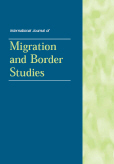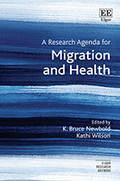
Engaging migrant careworkers: examining cases of exploitation by recruitment agencies in Quebec, Canada
Summary: Private, for-profit recruitment and employment agencies are key intermediaries connecting migrant workers from abroad to employers in Canada. Despite this, there is a lack of effective regulation of recruitment agencies by the Canadian federal and provincial governments. The objective of this article is to provide a snapshot of the problem, based on the empirical analysis of the casework of PINAY, a community organisation in Montreal, Quebec, highlighting the multiple compounding effects of this type of exploitation and to highlight the role that community-based organisations play in supporting migrant workers faced with them. Our analysis identifies three types of exploitation: exploitation of financial need, exploitation of immigration precarity, and exploitation of relationships. We conclude the article by discussing community level responses to the exploitation migrant works face in their interactions with recruitment agencies and reflect upon the implications of Quebec’s recent amendment of its labour standards.
Auteur(s)
Lindsay Larios, Jill Hanley, Manuel Salamanca Cardona, Mostafa Henaway, Nuha Dwaikat Shaer, Sonia Ben Soltane


